The flag of Oman serves as an emblem of the nation’s unique essence and ambitions, charting its path from a storied past toward a future of innovation.
More than just a national emblem, it intertwines Oman’s heritage and forward-thinking ethos and stands for its unique design that resonates deeply with Omanis, reflecting their communal ethos and the values that shape their society.
Flag of Oman
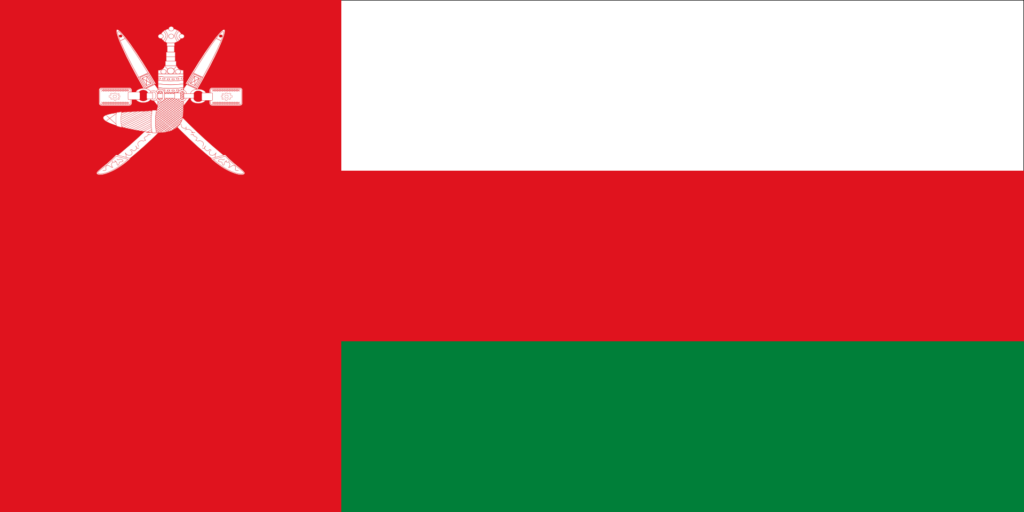
The flag of Oman presents a distinctive design characterized by a trio of horizontal stripes and a prominent national emblem. The upper and lower stripes are white and green, respectively, while a bold red band runs along the hoist. Central to its design is the national emblem, positioned on the red band, featuring a pair of crossed swords and a khanjar, a traditional Omani dagger.
This emblem, deeply rooted in Omani culture, signifies the nation’s historical martial prowess and enduring strength. The flag’s layout, with its clean lines and balanced proportions, symbolizes the country’s unity and stability.
Flag of Oman: Color Palette
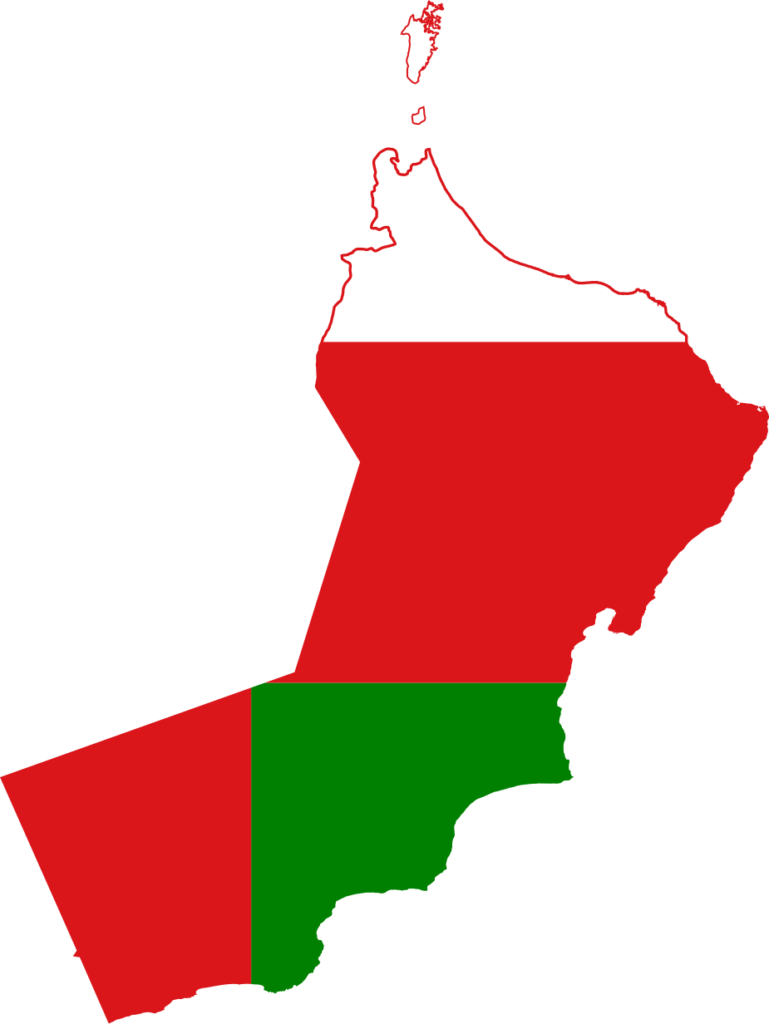
Flag of Oman Emoji: 🇴🇲
The color palette of the Omani flag is both meaningful and visually striking, consisting of three primary colors. Each hue is chosen for its deep cultural and historical significance, contributing to the flag’s overall symbolism.
Meaning of Each Color
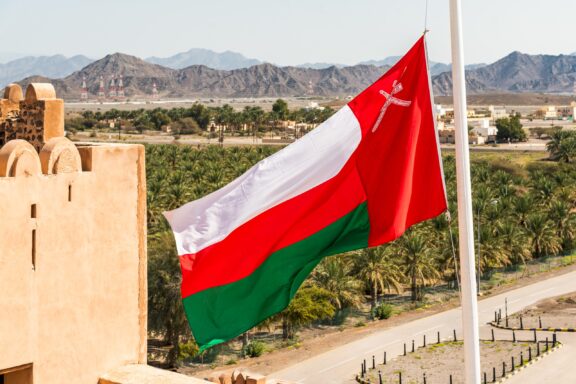
White
Historically, white in the Omani flag is associated with peace and prosperity. In a deeper context, it is linked to the Imam, the religious leader of Oman, signifying a spiritual and serene aspect of the nation’s character.
This color represents Oman’s commitment to maintaining peace within its borders and with its neighbors.
Red
Red is a prominent color in Gulf state flags and holds a special place in Oman’s flag. It symbolizes the battles fought against foreign invaders, reflecting the nation’s resilience and courage throughout its history.
Additionally, red represents the sultanate, indicating the ruling dynasty’s role in shaping Oman’s destiny.
Green
Green is traditionally tied to the fertility of the land, representing Oman’s natural wealth and connection to the earth.
It is also associated with the Jabal al-Akhdar or “Green Mountains,” a significant geographical feature in Oman. This color embodies the country’s agricultural heritage and its respect for the natural environment.
Coat of Arms of Oman
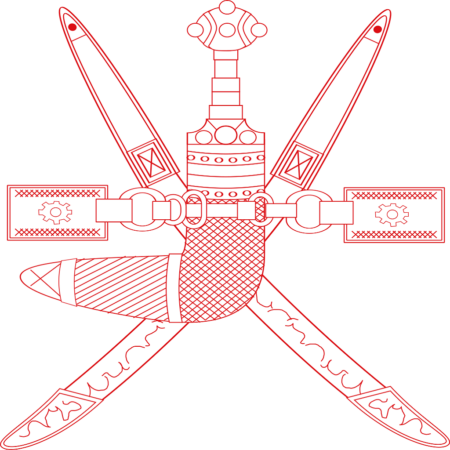
The Coat of Arms of Oman, embodying the nation’s historical strength and traditions, is a symbol rich with cultural significance.
This emblem, originating in the 18th century, resonates deeply with Oman’s heritage and national pride. Here are some of the key elements found in Oman:
- Crossed Swords: These represent Oman’s martial history and fortitude. The swords symbolize the nation’s readiness to defend its sovereignty and resilience through various historical periods.
- Khanjar (Traditional Omani Dagger): Positioned over the crossed swords, the khanjar is a distinct emblem of Omani culture. It reflects the country’s long-standing tradition of craftsmanship and its historical significance in regional conflicts.
- Horsebit Linking the Weapons: This ornate element symbolizes the connection between Oman’s historic armaments and cultural identity.
Each component of the Coat of Arms represents Oman’s martial past and a testament to its national pride and commitment to preserving its culture and independence.
Historical Evolution and the Meaning Behind Changes
The flag of Oman has seen significant evolution, reflecting the nation’s changing political and cultural landscape. Initially, Oman’s flags were relatively simple, often featuring a single color, primarily red, symbolizing traditional leadership.
During the Omani Empire, the flag was pivotal in representing the country’s maritime strength and expansion, reflecting its status as a formidable regional maritime power.
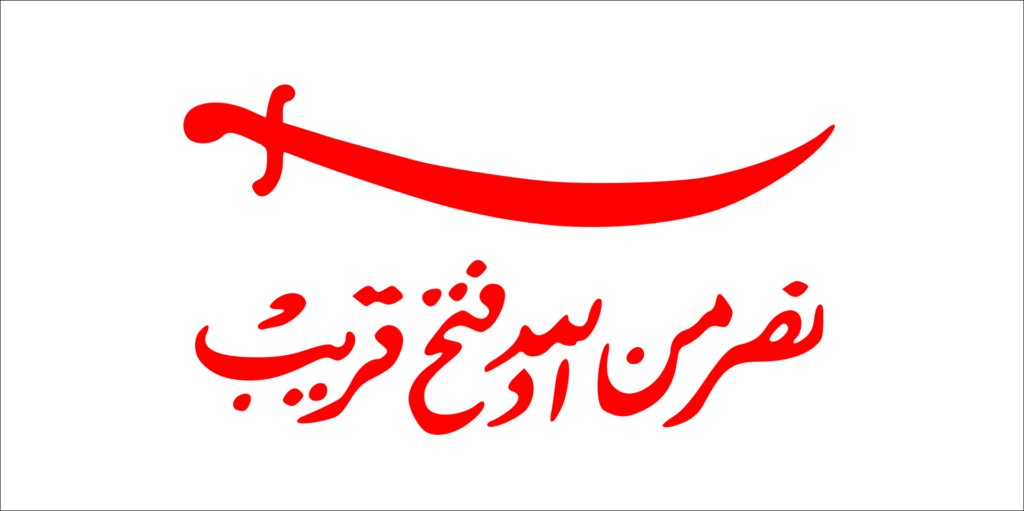
In the 19th century, a shift occurred with adopting a white flag, denoting the Imamate’s religious leadership, highlighting a period where religious authority gained prominence.
The most transformative change came in 1970 under Sultan Qaboos bin Said al Said, who introduced the current design. This modern flag, while retaining elements of traditional symbolism, was part of Oman’s broader modernization efforts, symbolizing a new era of national identity and international engagement.
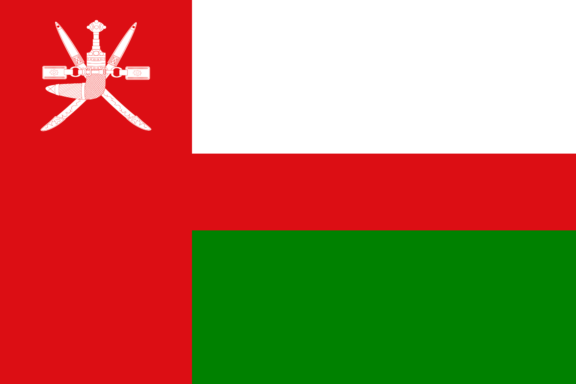
Finally, a minor adjustment in 1995 further refined the flag’s design, ensuring equal width for the horizontal stripes, enhancing its visual balance and modern appeal.
This evolution from a simple to a more complex design mirrors Oman’s transition from traditional rule to a contemporary nation-state, keen on preserving its heritage while navigating modernity.
Overall Symbolic Meaning of the Flag
The flag of Oman stands as a symbol of the nation’s harmony, resilience, and spirit. It balances Oman’s historical legacy and fosters a vision for future progress while vividly representing Oman’s distinct character within the global community.
Similar Flags to the Flag of Oman
The flag of Oman shares similarities with a few other flags, primarily due to common cultural symbols, colors, and regional influences.
United Arab Emirates
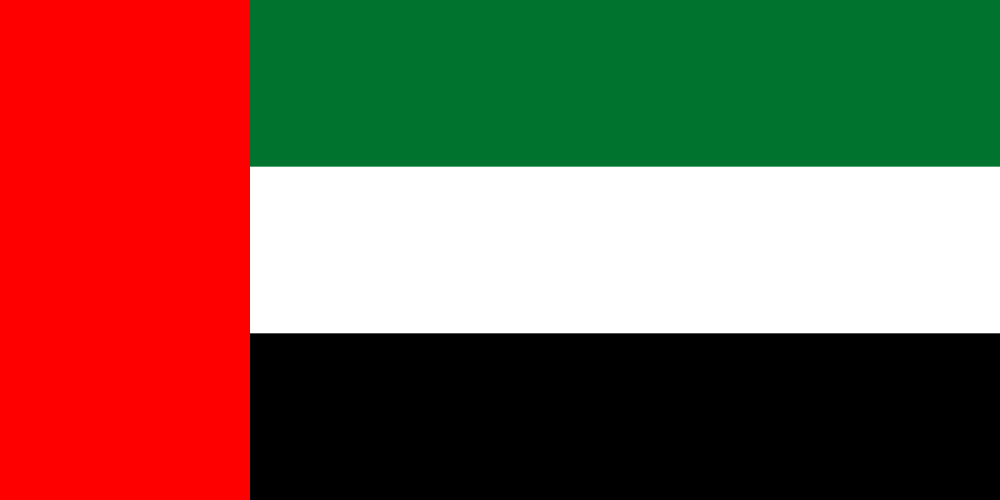
The flag of the United Arab Emirates (UAE) also features red, green, and white, common colors in the Arab world.
The red color in both flags signifies Arab unity and heritage, while green often represents prosperity and cultural richness in the region. The UAE flag, however, arranges these colors differently and includes black.
Kuwait
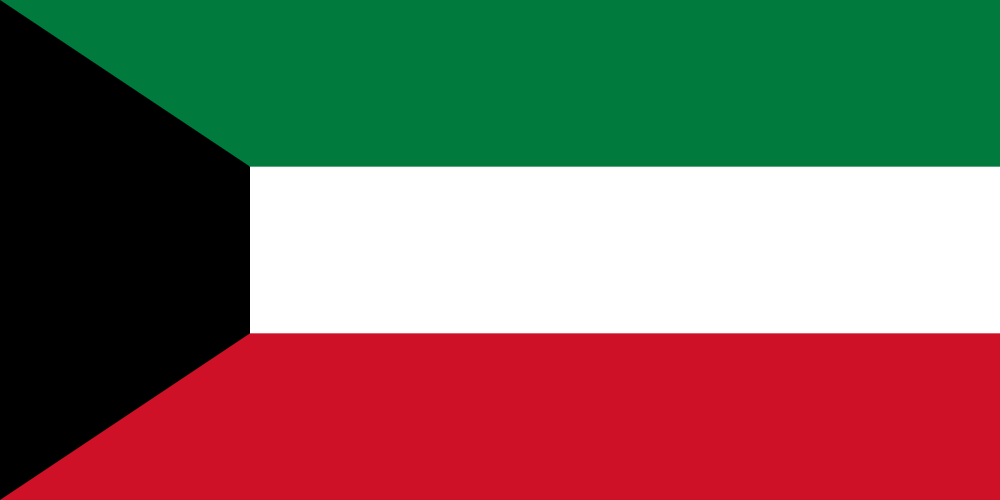
Kuwait’s flag includes green, white, and red, like Oman’s. These colors are commonly used across the Arab world to symbolize various aspects of cultural and historical significance, such as unity, peace, and bloodshed in struggles for freedom.
Iran
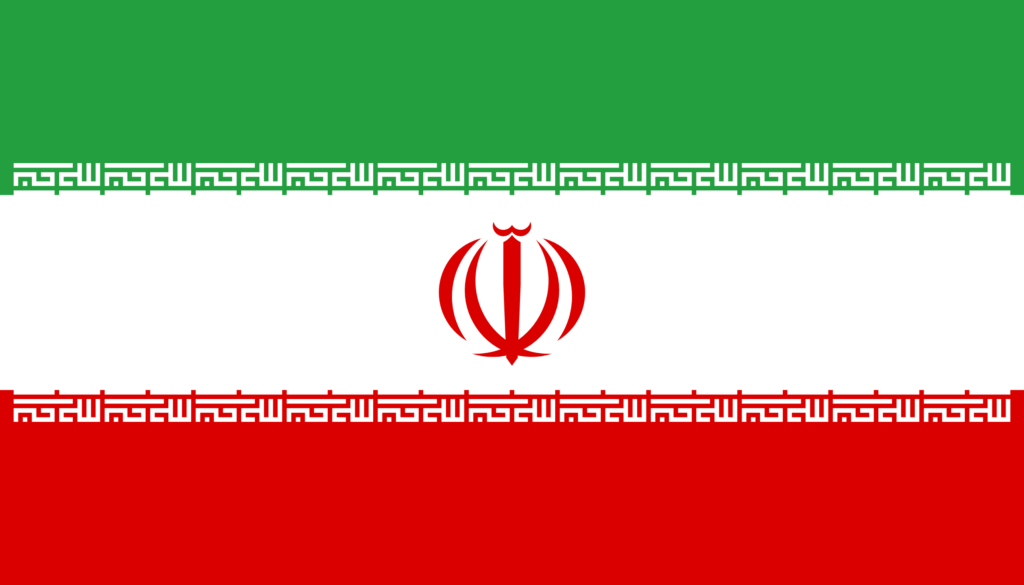
The flag of Iran features horizontal stripes of green, white, and red. Like Oman’s flag, green is often associated with Islam and prosperity, white symbolizes peace, and red stands for courage and sacrifice.
The shared use of these colors reflects common cultural and religious themes prevalent in the region. However, Iran’s flag includes unique elements like the national emblem and calligraphic inscriptions, setting it apart from Oman’s design.
Final Thoughts
The flag of Oman, with its distinctive colors and emblem, holds a profound place among the global tapestry of flags, symbolizing a unique blend of historical depth and modern aspiration. For Omanis, it represents their nation’s identity and a source of profound national sentiment and unity.
Image Sources and Copyright Information
- Oman Flag Flying Over Jabreen Castle with Mountainous Background: © elesi/Shutterstock